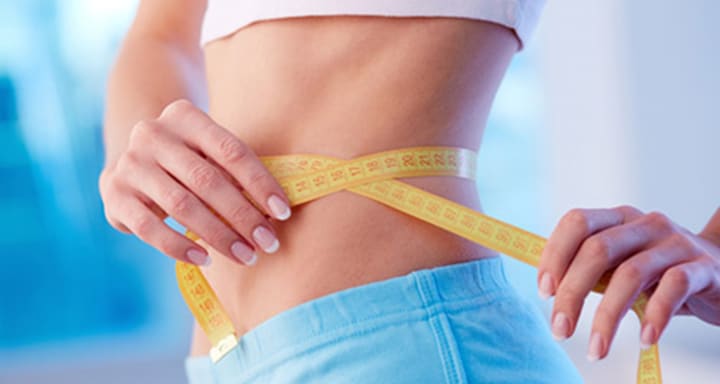10 Ways to Long-Term Fat Loss
Lose Your First 10 Lbs

Losing body fat can be a difficult process that necessitates a lot of effort, patience, and attention.
Although many fad diets and fat-burning products promise immediate results, the most efficient method to reach and maintain a healthy weight is to change your diet, lifestyle, and exercise regimen.
You can also improve your general health by taking a few simple steps to promote long-term, sustainable fat loss.
Here are 12 of the most effective techniques to lose weight.

1. Start strength training
Strength training is a sort of exercise that involves contracting your muscles against resistance. It is a form of resistance training that involves lifting weights to enhance muscular mass and strength over time.
Strength training has a number of health benefits, particularly when it comes to fat loss, according to research.
Resistance exercise for at least 4 weeks may help reduce body fat by an average of 1.46 percent, according to a review of 58 studies. It may also help you lose body fat mass and visceral fat, which is fat that surrounds your organs in your stomach.
Another study found that 5 months of strength training was more effective than aerobic exercise alone in lowering body fat in obese teenagers.
Furthermore, resistance training may aid in the preservation of fat-free mass, which may boost the number of calories burned during rest.
Resistance training increased people's resting metabolic rate when compared to a control group, but aerobic exercise had no effect on metabolism, according to one study.
Lifting weights, doing bodyweight exercises, and using gym equipment are all simple ways to begin strength training.
2. Follow a high protein diet
Eating more protein-rich foods may help you lose weight and lower your hunger.
In fact, eating more high-quality protein has been linked to a lower risk of extra body fat and obesity in several studies.
According to other research, a high-protein diet may aid in the preservation of muscle mass and metabolism during weight loss.
Increasing your protein consumption can help you lose weight by increasing feelings of fullness, decreasing hunger, and lowering calorie intake (8Trusted Source.
Every day, try to include a couple servings of high-protein foods in your diet. Meat, seafood, eggs, beans, tofu, and dairy products including milk, cheese, and yogurt are all high in protein.
3. Get more sleep
An easy method to help you reach and maintain a healthy weight is to go to bed a little earlier or set your alarm clock a little later.
Several studies have linked getting enough sleep to losing weight.
Sleeping less than 6 hours each night was associated to an increased risk of obesity in young women in a 10-year research.
Another small study found that receiving one hour less of sleep every night resulted in less fat reduction in adults on a low-calorie diet than a control group.
According to other research, a lack of sleep can lead to changes in hunger hormones, increased appetite, and an increased risk of obesity.
4. Eat more healthy fats
Increasing your diet of good fats may help you lose weight, despite the fact that it may seem paradoxical.
When compared to a low-fat diet, a 12-month study found that adopting a Mediterranean diet rich in healthy fats from olive oil and nuts resulted in higher long-term weight loss.
Another study found that eating a diet rich in olive oil led to greater weight loss and abdominal fat loss than eating a diet low in olive oil.
Furthermore, increasing trans-fat intake — a type of fat commonly found in fried or processed meals — is linked to longer-term weight gain.
Nutritious fats such as olive oil, coconut oil, avocados, nuts, and seeds are just a few examples of healthy fats.
5. Drink unsweetened beverages
One of the simplest methods to encourage long-term, sustained fat loss is to replace sugary drinks with healthy options.
Sugar-sweetened beverages, such as soda, for example, are high in calories and have little nutritional value. Alcohol is also abundant in calories and has been shown to reduce inhibitions, increasing the risk of overeating.
Excess belly fat has been linked to both sugar-sweetened beverages and alcohol consumption in studies.
Choose calorie-free beverages like water or green tea instead.
Drinking 1 pint (570 mL) of water before a meal boosted feelings of fullness, reduced appetite, and reduced the number of calories consumed during the meal, according to a small study of 14 young males.
6. Fill up on fiber
Soluble fiber, found in plant foods, absorbs water and passes slowly through your digestive track, allowing you to feel fuller for longer.
Increasing your diet of rich fiber meals, according to some research, may help you avoid gaining weight. Fruits, vegetables, legumes, whole grains, nuts, and seeds are examples of these foods.
One research of 345 adults found that eating more fiber led to more weight loss and better dietary adherence.
Another study discovered that increasing soluble fiber consumption reduced body weight and belly fat without affecting calorie intake.
7. Choose whole grains instead of refined carbs
Reducing your intake of refined carbohydrates may aid in the loss of excess body fat.
Refined grains are removed of their bran and germ during processing, resulting in a low-fiber, low-nutrient final product.
Refined carbohydrates also have a high glycemic index (GI), which can produce blood sugar rises and crashes, leading to increased hunger. Still, if you eat refined carbs on their own rather than as part of a balanced diet, you're more likely to see these consequences.
Furthermore, studies have linked high-refined-carbohydrate diets to a rise in belly fat over time.
Whole grain diets, on the other hand, are linked to a lower BMI and body weight, as well as a smaller waist circumference.
Keep in mind that traditional weight metrics such as BMI don't provide a complete picture of health.
Whole grains such as whole wheat, quinoa, buckwheat, barley, and oats can be used to substitute refined carbs found in pastries, processed foods, pastas, white breads, and breakfast cereals.
8. Increase your cardio
One of the most prevalent types of exercise is cardio, also known as aerobic exercise. It refers to any sort of exercise that targets the heart and lungs.
One of the most efficient ways to boost fat burning and weight loss is to incorporate cardio into your routine.
For instance, a review of 15 research found a link between higher aerobic activity and lower abdominal fat in middle-aged women.
Other research has found that aerobic exercise can help you gain muscle mass while also reducing belly fat, waist circumference, and overall body fat.
The majority of studies suggest 150–300 minutes of moderate to intense activity per week, or 20–40 minutes of cardio per day.
Running, walking, cycling, and swimming are just a few examples of cardio workouts.
9. Drink coffee
Caffeine stimulates your central nervous system, enhances your metabolism, and aids in fatty acid breakdown.
Caffeine has also been proven to increase fat burning during aerobic exercise, especially in untrained or inactive individuals.
Increased coffee consumption was linked to a lower incidence of obesity, especially in men, according to a major evaluation of 12 research. Another study with 2,623 persons found that higher coffee intake was associated with a higher percentage of weight reduction maintenance success.
Avoid using a lot of cream or sugar in your coffee to get the most health advantages. Rather, drink it black or with a dash of milk.
10. Try high intensity interval training (HIIT)
High-intensity interval training (HIIT) is a type of exercise that involves brief bursts of activity followed by short rest intervals to maintain a high heart rate.
HIIT has been shown in studies to be extremely effective at increasing fat burning and promoting long-term weight loss.
According to one study, exercising HIIT three times per week for an average of ten weeks lowered body fat mass and waist circumference considerably.
Furthermore, HIIT required 40% less training time than moderate-intensity continuous training, which includes activities such as running, rowing, and utilizing an elliptical machine.
Another study found that HIIT helped people burn up to 30% more calories in the same amount of time than other types of exercise like cycling or jogging.
Try alternating between walking and jogging or sprinting for 30 seconds at a time to get started. You can also alternate between workouts like as burpees, pushups, and squats with short recovery intervals.






Comments
There are no comments for this story
Be the first to respond and start the conversation.